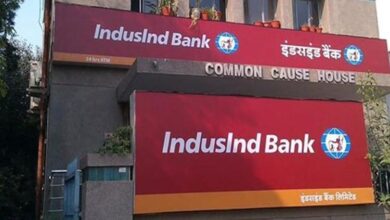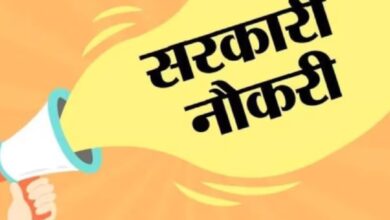Neglecting the informal sector may cost heavy on India’s GDP.

The informal sector constitutes almost 90% of the workforce and as per the statistics provided by the Government of India, the unorganised sector contributes to almost 50% of the GDP.
It is not unknown that the consequent lockdowns due to the pandemic has devastated the unorganized sector. With India struggling to fight the deadly second wave of Corona Virus pandemic and with the rate of vaccination which is approximately 10%, it is a distant dream that the workers of the informal sector will get vaccinated. Considering their livelihoods, it is to be kept in mind that their chance of getting infected to the virus is much more than the workers of other sector.
In the beginning of the year, the frontline workers including the healthcare workers, were immunized on a priority basis. Presently, anyone above the age of 18 can get vaccinated, but with India’s extreme shortage in vaccines, most of the states are preferring to vaccinate people above the age of 45. Such disgraceful performance by India to vaccinate is people is not only due to bad planning in vaccine production but also India’s vaccination drive is controlled by technology; this has excluded the vast majority of the informal sector.
It is to be kept in mind that almost 70% of the workforce is employed under the unorganised sector, this includes the migrant workers as well. The type of work these workers do, exposes them to the virus more than any other sector. The lack of place where these migrant workers or the informal sector workers can stay makes it near to impossible in containing the deadly microorganism.
Informal sector workers or the unorganised sector workers are those who work at the construction sites, textile factories, jute factories, the daily wage earners. These workers mostly suffer from co-morbidities like Tuberculosis, STDs, unchecked diabetes and other diseases which make them even more vulnerable to the COVID-19 virus. Sadly, if they are infected, they do not have the resources to fight with the disease. As they are from the informal sector, there is no guarantee of salary and they do not fortunate enough to be part of any health insurances. Hence, they are destined to be succumbed to the deadly virus. All of these doesn’t stop the daily wage earners to stop working and they are still looking for job or working without any protection. The vaccine is a necessary step in fighting the lethal virus. It has been found that vaccination can reduce the mortality and it is the only ray of light during this darkest hour. But, unfortunately India is yet not successful in securing her people and protecting the informal sector is far away from reality. So, what is restricting India in immunizing the informal sector?
Technological barrier
First and foremost, India’s vaccination campaign is highly dependent on digital technology. According to Deloitte-Assocham study ‘Digital India – Unlocking the Trillion Dollar Opportunity’, India has one of the world’s largest populations of digital illiterates. Only 10% of India’s population is digitally literate. Within this 10%, urban dwellers take King’s share and most of the daily wage workers lack devices or they do not have access to internet or they are not digitally literate.
Not only that, based on the nature of the work, most of the daily wage workers fall in the age group 18-45 years. Vaccination drive according to age and through digital platforms has led to discrepancy in immunization. In families where not even a single member is above the age 45 or where not even a single member of the family has received vaccine, priority must be made to vaccinate at least the earning member of the family. This can help them survive the brutal pandemic without starvation by losing the only bread earner in the family.
Proprietor accountability
It must be the responsibility of the manager or the employer to vaccinate it’s workers in a timely manner. They should take the initiative of vaccinating the employees and their families. This initiative if taken can reach a wide number of people. Just like some private organizations like the TCS, has taken the responsibility of vaccinating their employees and their family members, they can also extend their immunization drive to the informal sector.
Taking an example of the textile factories or the construction sites, where the employer can take the initiative of vaccinating their employees along with their families. Similarly, we get to witness cities like Mumbai where the Municipal Corporations has taken the responsibility of initiating vaccination drives in the residential areas where the informal sector workers such as the domestic helpers, the gardeners and other informal sector workers must be able to get vaccinated. It is to be kept in mind that the chances of getting infected by the virus is on the higher side for those people who has to go to work at someone’s else’s house.
The Confederation of Real Estate Developers Associations of India (CREDAI) had made and announcement on Twitter that the coming in president of the body has aimed to vaccinate 2.5 crore construction site workers for free. Unfortunately, there has been no further announcement or updates after that. It might be of value to utilize CREDAI’s connections in organizing vaccination drives for workers. Nevertheless, the employer must support all the cost of procuring and regulating the vaccination process and it should not be burdened on the workers.
It doesn’t seem practicable by small employers who lacks enough capital to regulate such vaccination drives for its employees. The small employers are yet to recover from the shock they suffered last year due to nationwide lockdown, hence, it is a task impossible for them.
Need of the hour is free walk-in vaccination centers near the settlements of the informal workers as well as near the localities or setting up units near construction sites. The vaccination timings should not be such that it hampers their productive time.
Bridging the Communication Gap
The most important factors behind India’s poor vaccination drive is miscommunication and misinformation. Most of the informal sector workers do not have access to any electronic device and therefore they do not have access to media or social media. Hence, it is important to clarify the myths and providing with correct information regarding vaccination. The informal sector has shown hesitancy in getting the jab because of side effects which would require some days of rest. This would lead to wage loss and the employers do not support such idea. The fear of being accountable for any mishap is also stopping the employers in encouraging the workers to get vaccinated.
Hence, encouraging the workers to take the vaccines by providing them with correct information and assuring of their wages might help in the process of vaccinating the informal sector.
Comprehensive immunization
Some of the state governments have started restricting vaccination only to their respective state dwellers. Setting up domicile as the criteria for being vaccinated can stagnate India’s poor vaccination rate even further. Taking the example of Uttar Pradesh, where the government announced that preference would be given to the locals. A sweeping part of the migrant laborers belong to the deprived caste which faces extreme poor health conditions, disposing them from the vaccination can make their situation worse. In 2020, we have witnessed the distress of the migrant laborers; they are the last to receive any form of facility from the government be in ration, shelter or direct benefit transfer. Hence, snatching their right of being vaccinated can impact our GDP to an unrecoverable level.
Hence, the informal sector should be immunized on a priority not only because they contribute to the massive chunk of the GDP, but also because they are the less privileged section of our society. Removing disparities in vaccination is the only way to contain the mortal virus and to flatten the uncontrolled graph.




